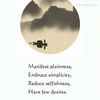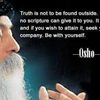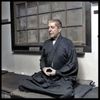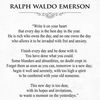28.5.2014 | 20:45
Bhagavad Gíta (Hávamál Indíalands) brátt endurútgefin á íslensku í ţýđingu Sigurđar Kristófers Péturssonar
Hinn dýrđlegi drottinn mćlti:
1. Heyr, Arjúna! hvernig ţú fćrđ áreiđanlega öđlast fullkomna ţekkingu á mér, svo framarlega sem ţú hefir allan hug á mér, leitar athvarfs hjá mér og iđkar yoga.
2. Eg vil veita ţér ţekkingu ţessa og speki algerlega. Og ađ ţví búnu er ţér engin ţörf á frekari frćđslu hér í heimi.
3. Varla er einn mađur međal ţúsunda, er keppir eftir fullkomnun. Og međal ţeirra, er keppa eftir henni og verđa fullkomnir, er varla einn, sem ţekkir insta eđli mitt.
Hávamál Indíalands (Bhagavad Gita) - Ţýtt hefir Sigurđur Kristófer Pétursson
22.5.2014 | 09:17
Sumarsamvera Lífspekifélagsins á Heilsustofnun NLFÍ, Hveragerđi, dagana 26. - 29. júní 2014
á Heilsustofnun NLFÍ, Hveragerđi,dagana 26. til 29. júní 2014
Verđ einn í herbergi tveir í herbergi
1 sólarhringur 15.200 kr. 25.800 kr. (12.900 pr. mann)
3 daga dvöl 38.700 kr. (12.900 á dag) 65.790 kr. (10.965 pr.mann á dag)
Fyrir ţá sem vilja:
5 daga dvöl 58.050 90.000
Í ţátttökugjaldinu felst gisting, fullt fćđi, ađgangur ađ líkamsrćktarsal og bađhúsinuKjarnalundi međ
inni og útisundlaug, heitum pottum, nuddpotti,víxlböđum, sauna og vatnsgufubađi.Einnig
eru reiđhjól til bođa. Fćđiđ er grćnmetisfćđi.
Ekkert skólagjald verđur ađ ţessu sinni.
Vinsamlegast tilkynniđ ţátttöku sem allra fyrst eđa fyrir 10 . júní.
Tilgreiniđ hvernig gistingu ţiđ viljiđ. Ţeir sem ekki gista geta keypt stakar máltíđir.
Strćtisvagnar nr. 51 og 52ganga frá Mjódd til Hveragerđis. Sjá nánar á heimasíđu straeto.is
Tilkynniđ ţátttöku í eftirfarandi síma eđa netfang:
554 2957 / 695 8955 halldorharalds@gmail.com Halldór Haraldsson
Dagskrá:
Fimmtudagur 26. júní
17:00 Slökun
19:30Erindi: Hugleiđingar um Bhagadvad Gita, Jón E Benediktsson
21:00Kvöldhressing
21:30Frjálst efni frá félögum
Föstudagur 27. júní
8:00 Hugleiđing
11:00Ganga
14:00Umrćđurum einkunnarorđ samverunar
17:00 Slökun
19:30Erindi: Meira um Sri Vidya og tilraunir međ tćknilegar hugleiđingar, Haraldur Erlendsson
21:00Kvöldhressing
21:30 Píanótónleikar: Halldór Haraldsson
Laugardagur 28. júní
8:00 Hugleiđing
11:00Ganga
14:00Halldór Haraldsson: Ţankar um frćđsluerindin í apríl. Umrćđur
17:00 Slökun
19:30Erindi: Birgir Bjarnason: Gjörningaerindi
21:30Frjálst efni frá félögum
Sunnudagur 29. júní
8:00Hugleiđing
11:00Ganga
12:00Samveru slitiđ
Matmálstímar:
9:00-10:00 morgunverđur,
11:45-12:45 hádegisverđur,
15:00-16:00 kaffi,
18:15-19:15 kvöldmatur.
Félagar eru hvattir til ađ koma međ efni tvö kvöld í dagskrárliđi kl. 21
22.5.2014 | 09:15
The Witness is a huge step forward ...
The Witness is a huge step forward, and it is a necessary and important step in meditation, but it is not ultimate. When the Witness or the soul is finally undone, then the Witness dissolves into everything that is witnessed. The subject/object duality collapses and there is only pure nondual awareness, which is very simple, very obvious.
18.5.2014 | 20:40
Hlédrag međ Rob Nairn
10.5.2014 | 22:39
... the actual state of the world, the actual state of your own life ...
6.5.2014 | 21:25
1500 Year Old Bible Claims Jesus Christ Was Not Crucified
Much to the dismay of the Vatican, an approx. 1500-2000 year old bible was found in Turkey, in the
Ethnography Museum of Ankara.
Discovered and kept secret in the year 2000, the book contains the Gospel of Barnabas – a disciple of Christ – which shows that Jesus was not crucified, nor was he the son of God, but a Prophet. The book also calls Apostle Paul “The Impostor”. The book also claims that Jesus ascended to heaven alive, and that Judas Iscariot was crucified in his place.
A report by The National Turk says that the Bible was seized from a gang of smugglers in a Mediterranean-area operation. The report states the gang was charged with smuggling antiquities, illegal excavations, and the possession of explosives. The books itself is valued as high as 40 Million Turkish Liras (approx. 28 mil. Dollars). Man, where is the Thieves Guild, when you need them?
AUTHENTICITY
According to reports, experts and religious authorities in Tehram insist that the book is original. The book itself is written with gold lettering, onto loosely-tied leather in Aramaic, the language of Jesus Christ.
The text maintains a vision similar to Islam, contradicting the New Testament’s teachings of Christianity. Jesus also foresees the coming of the Prophet Muhammad, who would found Islam 700 years later.
It is believed that, during the Council of Nicea, the Catholic Church hand-picked the gospels that form the Bible as we know it today; omitting the Gospel of Barnabas (among many others) in favor of the four canonical gospels of Matthew, Mark, Luke and John. Many biblical texts have begun to surface over time, including those of the Dead Sea and Gnostic Gospels; but this book especially, seems to worry the Vatican.
THE CATHOLIC CHURCH WANTS IN
What does this mean to Christian-derived religions and their followers? Quite a tight spot. The Vatican has asked Turkish authorities to let them examine the contents of the book within the Church. Now that the book has been found, will they come to accept the it and its evidence? Will they deny it altogether? Call it a “Muslim lie”, as did the “Truth” Magazine, in 2000?
To many, this book is a beacon of hope, that believers soon realize that the object of their adoration is arbitrary; and that all text, especially religious text, is subject to interpretation.
What does this mean to atheists/agnostics/secular thinkers? Is the text real? Fake? Does it matter? Hopefully, this news inspires the religious to ask questions, instead of pointing fingers or believing anything blindly.
Please, don’t go poking fun or tossing around the “I told you so!”s. The biggest danger of faith is when people believe what they want to believe, defending against any and all evidence; especially when that evidence revolutionizes their foundation from the ground up. And the biggest culprit to that danger is the ego trap: rejecting/criticizing others, for being unlike you.
For centuries, the “defense” of blind faith has driven nations to war, violence, discrimination, slavery and to become the society of automatons that we are today; and for just as long, it has been justified with lies. If you know better, act like it
Read more at http://www.the-open-mind.com/500-year-old-bible-claims-jesus-christ-was-not-crucified-vatican-in-awe/#Q0AuKso4QlkHiPAF.99
Trúmál og siđferđi | Breytt s.d. kl. 21:27 | Slóđ | Facebook | Athugasemdir (0)
4.5.2014 | 19:30
Everything in this world is constantly moving ...

4.5.2014 | 17:47
The following is taken from a dharma talk given by Jakusho Kwong-roshi on Feb. 18, 2011 during the Winter Ango sesshin at the Sonoma Mountain Zen Center
There are two teachings I want to talk about in reference to Dogen’s writing, Kuge; the first is the Heart Sutra, and the other is impermanency. This is from the late Maezumi-roshi’s Commentary 5 in his book ‘The Way of Everyday Life.’ He’s talking about the Three Dharma Marks of Existence and he begins by stating that basically everything is impermanent. There is nothing that does not change. No one can refute that. Everything is changing. “On the physiological level, the cells within our entire body, every seven years, are replaced.” After the sickness I had recently I felt like something had thoroughly changed in me from head to toe. Even if we try not to let it happen, it still does. This morning there was a little sunshine, now it’s raining. Last night there was a beautiful clear moon at two o’clock in the morning. He writes: “relationships among people – I like you, I don’t like you – even in a Zen community, you might not say these things but you own them” – it’s your feeling or emotion, and you can’t put it out there; you have to work with it – day to day, our moods change.
The second mark of existence is when impermanency takes the form of uncertainty or insecurity. Because you don’t know what’s going to happen, there’s nothing you can rely on and this is what brings people to practice, when they sense something is missing. Everything they’ve gone to school for, everything they’ve said or tried has resulted in still more searching, and that’s what leads people to Zen. It’s what originally led me to Zen. “Intrinsically impermanence is the nature of things. Because nothing at all is permanent, there’s no individual self that has independent existence.” meaning that it lasts forever. Because there’s no self, there’s no ego. What we have is just an idea of ego. Everything is impermanent, consequently everything is empty. This is the natural second step of impermanency. There’s no independent self nature that lasts forever.
From impermanency, or nothing fixed in the universe, the second mark is psychological uncertainty, and the third is no ego or no self. Impermanency, no-self, Nirvana. That’s it. ‘Flowers in the sky’ is another principle of impermanency – because flowers can’t exist outside of impermanency. We value their beauty because of their short life. That’s why we appreciate them. Flowers in the sky refers to the principle of impermanency and also that all existence is not real. Everything in front of you is not real, because you’ve named it. And because you’ve named it, you’ve divided yourself from it. As children grow up, they are originally in one-ness, but they can’t help it because as they grow up they begin objectifying. (Of course, that’s very wearing on the parents!) (laughter). But it’s also natural that the child acquires names for things, and develops that sense of subject and object. It can’t be helped. That’s human life. But children lose that sense of oneness. Yet it’s always there, and to find it again, to rediremains with you.
In his writing on Kuge, Katagiri-roshi says, “The emptiness behind all this is a wondrous being.” And this leads us to the Heart Sutra. The Heart Sutra states no eyes no ears - nothing is real. I was reading Shohaku Okumura’s commentary on Dogen’s Genjo Koan and in one section he says that everything is prajna. Everything we do is prajna. This is quite remarkable. I think Zen is the only tradition that emphasizes this. Zen in the arts, Zen in athletics, Zen in movement – this is a big point for us and we should use it. Zen emphasizes practice. Wherever you are, whatever you do, is prajna and practice. This is life-giving. This is restoration of your own Buddhahood. When you struggle, sometimes over little things, all you have to do is pause and feel. Feel the paper in your hands. Feel your utensils. Feel your tools. Feel the oryoki bowl. You can do these things. Work practice is no different than life itself. Prajna is right in front of you. That’s samsara and nirvana. You then have to transcend both of them. You can’t attach to either side.
So in the Heart Sutra, Avalokiteshvara clearly saw that form is emptiness and emptiness is form. When we read that, shiki soku ze ku, ku soku ze shiki, it means exactly that. But still this is dualistic. This is not the Heart Sutra’s conclusion. Soku ze refers to identity, or being identical. It can also mean as-it-is, or just like this. What it’s saying is that form is no other than emptiness, emptiness is no other than form. So, Katagiri says that soku has three meanings to it: one, it unifies two things. For instance, in kinhin, we’re trying to make individual movement become one. It’s hard to achieve, because some people have difficulty with spatial relationships; you think you’re close but actually you’re ten feet behind because maybe you are lost in your thoughts. That’s the first soku. The second is unifying two objects and becoming one with them. Again, it could be like milk and water – when you mix the two they become one. It’s also like your hand – there’s the back and there’s the palm. But it’s still one hand. Or like a piece of paper. A front sheet and a back face. The Sandokai also mentions the dark and the light. One can’t be found without the other. The third one is me and whatever is there – no gap. Subject and Object have disappeared. In this case, both sides are included. That side, this side. What it comes down to is that there are no sides. In the Sandokai it also says that in the dark all words become one. Or, cause and effect (karma) must return to the great reality. The great mystery. There’s no two; but we’ve made a separation. Now we have to come back. We have to restore ourselves and come back, and the middle way is to go beyond even that one.
There was a Christian priest in this area, and someone asked him a question, and he said, “I always return to one.” I wrote him a letter and asked, “Where does the one return to?” He never answered (laughter). But isn't that something? There are no sides. And because there are no sides this miraculous world appears – this world of prajna appears.
Bodhidharma wanted to transmit the dharma to one of his successors. There were four disciples – three men and one woman. One by one they had to reveal their practice and what they had inherited. The first one came up and Bodhidharma said, “You’ve got my skin.” The second one, the woman, came up and he said to her, “You’ve got my flesh.” After the third one spoke, he said “You’ve got my bone.” Then the fourth one, Eka, stood up with no words, walked – zazen sitting, zazen walking, zazen standing, zazen bowing and Bodhidharma said, “You’ve got my marrow.” He was the one who became the Second Ancestor. The first time I heard that story I thought ‘he must have had the best answer’ but really, they’re all the same. All the people are valued. So our conditioned mind works that way, because we’re trained to think this is the best and that’s the worst. So this is the higher teaching of the Heart Sutra. Form is form, emptiness is emptiness. There is no more form and emptiness. Because when we say form, emptiness is included already; in fact, we don’t even have to say it. It’s just there. And emptiness is just emptiness. The conclusion of the Heart Sutra – free from dualities, liberated from samsara and nirvana, free from like and dislike.
Coming back to Kuge: this is Katagiri’s talk at a teachers gathering. “In Buddhism, in general, ‘flowers in the sky’ means the principle of impermanency. That all existence is not real. In our ancestor’s teaching, true emptiness is a wondrous being. Since flowers bloom in the sky, or emptiness, they are not flowers. Since they are the sky, or emptiness, with flowers, it is not the sky or emptiness. It goes beyond this and that.” You can’t say what it is. Being, non-being. “The principle of impermanency means there’s no particular thing which causes all things to exist forever. It means that all existence is unreal. All exists, but all things are not real. And also, ‘flowers in the sky’ states the principle that true emptiness is a wondrous being.” He talks about this example: “We can see this incense burner on the altar, but it is not real. But our consciousness says that the burner exists completely in the previous moment and in the following moment. Consciously or unconsciously, we believe this – the burner exists - but it doesn’t exist; it exists as unreal. It’s pretty hard to understand this. If we understand emptiness, we immediately grasp emptiness. ‘Oh I understand emptiness.’ But if you grasp emptiness, it is already not emptiness – because you grasped it. So what you grasp, in your hand, in your mind, in your head, is not real emptiness. It’s the idea of emptiness. Real emptiness is a profound and refined state of existence, which causes all sentient beings to be restored.” Restored, meaning we are dynamically alive. Thank you.
Trúmál og siđferđi | Breytt s.d. kl. 17:49 | Slóđ | Facebook | Athugasemdir (0)
Um bloggiđ
OM - ॐ
Fćrsluflokkar
Tenglar
Hugleiđslunámskeiđ á Íslandi
- Námskeið hjá Hugleiðslu- og friðarmiðstöðinni
- Sahaja yoga-hugleiðsla
- Hugleiðslunámskeið hjá Brahma Kumaris
- Sri Chinmoy miðstöðin á Íslandi
- Andartak.is - Kundalini jóga og hugleiðsla
- Zen-hugleiðslunámskeið
- Dharma.is - Innsæishugleiðsla
- Innhverf íhugun
Frí hugleiđslunámskeiđ á Netinu
- Free Meditations
- Námskeið í búddískri hugleiðslu
- Námskeið í Kundalini yoga
- Free online meditation course
- Free Sahaja meditation course online
Hugleiđsla
Hér er ađ finna tengla ţar sem ţú getur lćrt og kynnt ţér hugleiđslu.
- Listin að hugleiða
- Zen á Íslandi - Zen-hugleiðsla
- Kristbjörg
- Kundalini-hugleiðsla
- Hugleiðslu- og friðarmiðstöðin
- SGI-búddismi á Íslandi
- Sri Chinmoy miðstöðin á Íslandi
- Skandinavíski yoga- og hugleiðsluskólinn
- Leiðbeiningar fyrir Zen-hugleiðslu
- Sahaja Yoga
- Brahma Kumaris - Raja Yoga hugleiðsla
- Jack Kornfield - Insight Meditation (vipassana)
- Centerpointe
- Ljósmiðlun
- Traditional Yoga and Meditation of the Himalayan Masters
- Innhverf íhugun
- Vipassana meditation course
Helg forn rit
- Veda-ritin
- Bhagavad Gita
- Bhagavad Gita
- Upanishads
- Upanishads
- Shiva sutra
- Brahma Sutra
- Yogasútrur Patanjalis
- Rig Veda
- Sama Veda
- Hatha Yoga Pradipika
- Shiva Samhita
- Gheranda Samhita
- Sacred Texts (Helg indversk rit)
- Biblían
- Dhammapada
- Kóraninn
Tímarit um andleg málefni
- Tímaritið Knowledge of reality
- Bindu - Tímarit Skandinavíska yoga- og hugleiðsluskólans
- Tímaritið Gangleri
- Primary Point - Zen
- Efnisskrá Ganglera frá 1926
- The Sufism Journal online
- The Theosophist
Bćkur á íslensku um andleg málefni
- Starfsrækt (Karma yoga) - Swami Vivekananda
- Allar bækur Gunnars Dal
- Bækur eftir Alice Baily
- Martínus - Bækur á íslensku
- Launviska Vedabóka
Bćkur um andleg málefni
- The Unknown Life of Jesus Christ
- Bók um Kriya Yoga
- Sjálfsævisaga Jóga
- Whispers from Eternity - Paramahansa Yogananda
- The Path - Swami Kriyananda
- God is for Everyone - Inspired by Yogananda
- My time with the master - Paramahansa Prajnanananda
- The Universe Within - Paramahansa Prajnanananda
- The art and science of Raja Yoga - Swami Kriyananda
- Complete work of Swami Vivekananda
- Gopi Krishna - Bækur, greinar og viðtöl
- Bókin Zen and the brain
- Zen Mind, Beginner´s Mind - Shunryu Suzuki-roshi
- Manual of Zen Buddhisim - D. T. Suzuki
- Stripping the Gurus
- Rödd þagnarinnar á ensku
- Eckhart Tolle - Stillness Speaks - Hljóðbók
- Bækur eftir Ramana Maharshi
- Saundarya Lahiri
- The Meditative Mind - Krishnamurti
- Krishnamurti´s Notebook
- Meditations - Krishnamurti
- The Serpent Power
- C. W. Leadbeater - Chakras: A Monograph
- Kundalini Yoga - Swami Sivananda
- Fríar bækur með Krishnamurti
- The Tibetan Book of Dead
- Karma Yoga - Swami Vivekananda
- Leiðarljós (Light on the Path) á ensku
- The Power of Now - Hljóðbók
- Hljóðbókin Breath sweeps mind eftir Jakusho Kwong-roshi
- Opening the Hand of Thought Bók eftir Kosho Uchiyama
- To shine one corner of the world : moments with Shunryu Suzuki : stories of a Zen master told by his students
- How to Cook your Life - Dogen
- The Art of Just Sitting: Essential Writings on the Zen Practice of Shikantaza
- On Zen Practice
- On Having No Head
Greinar um andleg málefni
- Greinasafn Lífspekifélagsins/Guðspekifélagsins
- Greinar eftir Sigvalda Hjálmarsson
- Greinar og rannskóknir tengdar kundalini
- Krishnamurti - Greinar, viðtöl og tilvitnanir
- Hugleiðingar um kenningar Sigvalda Hjálmarssonar - I. Hluti
- Hugleiðingar um kenningar Sigvalda Hjálmarssonar - II. hluti
- Greinar úr zen-tímaritinu Primary Point
- Greinar eftir dr. Erlend Haraldsson
- Greinasafn Jóns L. Arnalds
- Yður er í dag frelsari fæddur? - Njörður P. Njarðvík
- Yoga og geðrækt
- Leiðin til hugljómunar - Sigvaldi Hjálmarsson
- Geinar úr tímaritinu Quest
Ýmsir tenglar andlegs eđlis - Íslenskir
- Kærleikssetrið
- Jógakennarafélag Íslands
- Lífspekifélagið/Guðspekifélagið
- AA
- CoDa
- Viska og gleði
- Kærleikssamtökin
- Björg Einarsdóttir
- Trú.is
- LAUSNIN - Baráttusamtök gegn meðvirkni
- Dharma.is - Innsæishugleiðsla
- Dulheimar - Andleg þróunarheimspeki
- Vetrarbrautin.com
- Listi yfir skráð trú- og lífskoðunarfélög á Íslandi
Ýmsir tenglar andlegs eđlis - Erlendir
- DharmaTalk með Thich Nhat Hanh
- Agni Yoga
- Meditation of the Himalayan Masters
- Vedanta Society
- Vedanta.com
- tantra-kundalini.com
- Ayurveda-próf - Hvaða líkamsgerð ertu?
- Prajnanamission
- Big Mind
- Vedanta Spiritual Library
- Great Integral Awakening
- Sounds True
- Wildmind - Buddhist Meditation
- Institute for Consciousness Research
- Biology of Kundalini
- Kundalini Research Network
- Hindu Tantrik Tradition
- Inner Self
- Spirit Voyage
- Dalai Lama kyrjar möntru úr Rig Veda
- Ýmislegt um Ramakrishna
- The Five Tibetan Rite
- Message from masters
- Bæklingur um sanskrítarframburð
- The Theosophical Society - International Headquarters
- Sri Vidya
- Vedanet
- Eastern tradition - Eastern Tradition Research Archive
- Lífspekifélög/Guðspekifélög um allan heim
Ýmsir andans menn
- Sigvaldi Hjálmarsson
- J. Krishnamurti
- Ken Wilber
- Gopi Krishna
- Swami Sivananda
- Osho
- Deepak Chopra
- Swami Vivekananda
- Sri Ramakrishna
- Yogi Hari
- Eckhart Tolle
- Yogi Shanti Desai
- Yogi Amrit Desai
- Shunryu Suzuki roshi
- Ramana Maharishi
- Sri Aurobindo
- Paramahansa Yogananda
- Paramahamsa Hariharananda
- Jakusho Kwong-roshi
- Jack Kornfield
- Swami Rama
- Grétar Fells
- D. T. Suzuki
- Dalai Lama
- Thich Nhat Hanh
- Eckhart Tolle
- Helena Blavatsky
- Paramahamsa Prajnanananda
- Rupert Spira
- Bodhidharma
- Om Swami
Lífspeki/Guđspeki
- Lífspekifélag Íslands
- Lífspekifélagið í USA
- Helena Blavatzky
- Facebook-síða Lífspekifélags Íslands
- Aðalstöðvar Lífspekifélagsins á Indlandi
Kriya Yoga
Hér er ađ finna tengla tengda Kriya Yoga
- Kriya Yoga Institute
- Paramahansa Hariharananda
- Paramahamsa Prajnanananda
- Bækur um Kriya Yoga eftir Hariharananda og Prajnananda
- Self-Realization Fellowship
- Ananda: The Teaching of Paramahansa Yogananda
- Cyberspace Ashram for Kriya Yoga
- Bókin Sjálfsævisaga jóga (Autobiography of a Yogi)
- Kriya Yoga - Swami Shankarananda Giri
- Kriya Yoga - Yogi Dhirananda
- Bók um Kriya Yoga á Netinu
- Kriya Yoga in the Lahiri Mahasaya family tradition
- Babaji´s Kriya Yoga
- Myndbönd um kriya yoga
- Prajnanamission
- Babaji Kriya Hatha Yoga - 18 Kriya Postures
- Umsókn - Kennslustundir hjá SRF
Hatha Yoga (Líkamsstöđur - Teygjur)
- Yogavin
- Jóga hjá Kristbjörgu
- Jóga Stúdíó
- Jógakennarafélag Íslands
- Jóga Jörð
- Jen Reviews
- Sólir
- Yogashala
- Jógakennarar og jógastöðvar á Íslandi
Zen
- Zen á Íslandi
- Sonoma Mountain Zen Center
- Bókin Zen Mind, Beginners Mind eftir Shunryu Suzuki-roshi
- Bókin No Beginning. No End eftir Jakusho Kwong-roshi kennara Zen á Íslandi
- Hljóðbókin Breath Sweeps Mind eftir Jakusho Kwong-roshi
- The Teaching of Shunryu Suzuki-roshi
- San Francisco Zen Center
- Myndbönd með Suzuki-roshi
- Plum Village - Thich Nhat Hanh
- Zen of Recovery - Mel Ash
- Zen Road
- Zen sútrur
- Kwan Um School of Zen
- Daily Zen
- Big Mind
- Zen Peacemakers
- Suzuki-roshi 50
- Hljóðbókin Zen mind, beginner´s mind
- The Suzuki Roshi Audio Archive
- Opening the Hand of Thought Bók eftir Kosho Uchiyama
- To shine one corner of the world : moments with Shunryu Suzuki : stories of a Zen master told by his students
- How to Cook your Life - Dogen
- The Art of Just Sitting: Essential Writings on the Zen Practice of Shikantaza
- On Zen Practice
Bloggvinir
-
 thesecret
thesecret
-
 gudjonbergmann
gudjonbergmann
-
 gyda
gyda
-
 heringi
heringi
-
 gudmundurhelgi
gudmundurhelgi
-
 braxi
braxi
-
 fruheimsmeistari
fruheimsmeistari
-
 vilborg-e
vilborg-e
-
 steina
steina
-
 ludvik
ludvik
-
 maggadora
maggadora
-
 baenamaer
baenamaer
-
 perlaheim
perlaheim
-
 vestfirdir
vestfirdir
-
 vglilja
vglilja
-
 palmig
palmig
-
 einherji
einherji
-
 andreaolafs
andreaolafs
-
 flinston
flinston
-
 birnarebekka
birnarebekka
-
 tilfinningar
tilfinningar
-
 dizadj
dizadj
-
 gylforce
gylforce
-
 esa-emorea777
esa-emorea777
-
 estersv
estersv
-
 eydis
eydis
-
 gudjonelias
gudjonelias
-
 heildraent-joga
heildraent-joga
-
 heildraent-lif
heildraent-lif
-
 guru
guru
-
 tru
tru
-
 fun
fun
-
 jensgud
jensgud
-
 josira
josira
-
 katrinsnaeholm
katrinsnaeholm
-
 kari-hardarson
kari-hardarson
-
 kiza
kiza
-
 kjarvald
kjarvald
-
 kristinnhalldor
kristinnhalldor
-
 kiddirokk
kiddirokk
-
 krilli
krilli
-
 laufherm
laufherm
-
 mariaannakristjansdottir
mariaannakristjansdottir
-
 manisvans
manisvans
-
 nanna
nanna
-
 aronsky
aronsky
-
 huldumenn
huldumenn
-
 ragjo
ragjo
-
 rose
rose
-
 straitjacket
straitjacket
-
 vinur
vinur
-
 nimbus
nimbus
-
 slembra
slembra
-
 svanurg
svanurg
-
 toshiki
toshiki
-
 hanoi
hanoi
-
 thorhallurheimisson
thorhallurheimisson
Heimsóknir
Flettingar
- Í dag (24.9.): 4
- Sl. sólarhring: 4
- Sl. viku: 28
- Frá upphafi: 96790
Annađ
- Innlit í dag: 3
- Innlit sl. viku: 20
- Gestir í dag: 3
- IP-tölur í dag: 3
Uppfćrt á 3 mín. fresti.
Skýringar








